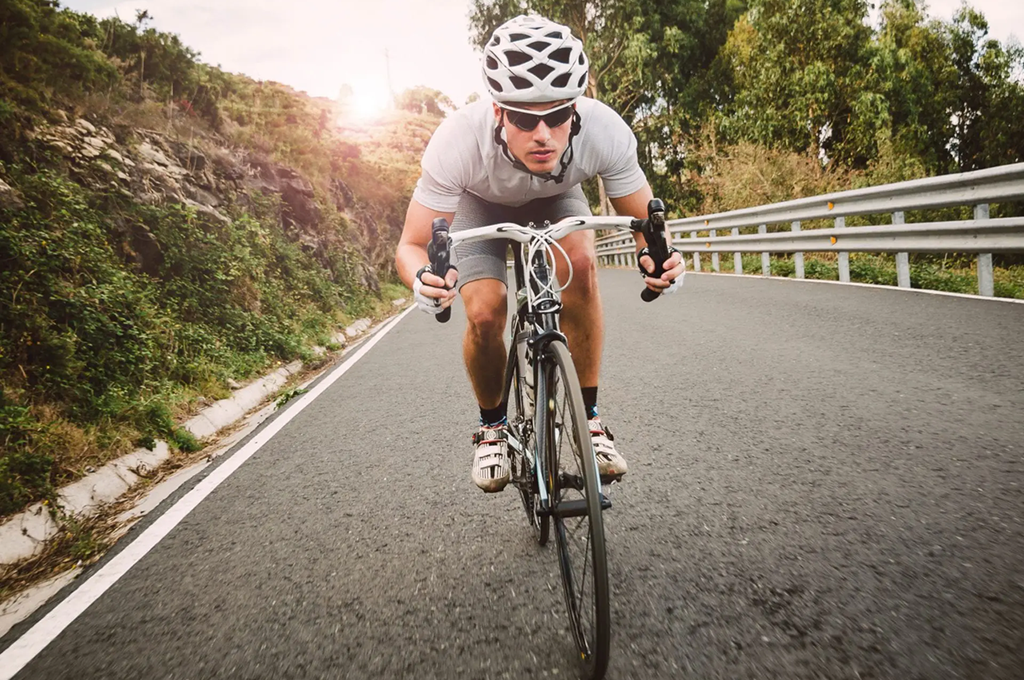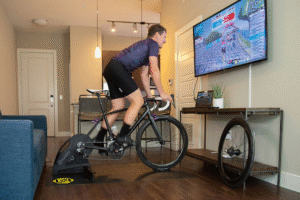
13 Proper Uphill Cycling Techniques to Know That Won’t Tire You Out
Hanoi Bike Tour introduces 13 proper uphill cycling techniques to help you conquer any slope with ease. Cycling uphill demands high technical skills and endurance. To avoid getting tired, mastering the right techniques is essential.
Maintain the correct cycling posture

Having the correct cycling posture will make climbing hills much easier
Proper cycling posture is crucial when riding uphill. It helps reduce fatigue and muscle strain. Your hands should rest on the top of the handlebar, about 50–70mm from the center of the stem. This distance allows space between your chest and arms, making it easier to breathe.
To accelerate, grip the top of the brake hoods. When descending, hold the lower part of the handlebars to achieve an aerodynamic posture. Always keep your back straight to maximize oxygen intake. Your upper body should remain stable—avoid unnecessary swaying to conserve energy.
Keep a consistent pedaling cadence
Maintaining a suitable cadence is key to efficient uphill riding. For low-intensity climbs, aim for a cadence of 60–75 RPM (revolutions per minute), which conserves energy better than pushing at 90 RPM. For high-intensity efforts, above 300 watts, a cadence of 80–95 RPM is ideal to keep momentum and avoid stalling.
Control your breathing
Breath control is vital for endurance sports. Incorrect breathing can quickly drain your energy and place pressure on your diaphragm and chest, limiting flexibility in your ribcage and abdomen. Maintain steady breathing on flat terrain. As you climb, switch to deep, rhythmic breaths rather than shallow, rapid ones.
Relax your hands

You should avoid putting too much pressure on your hands to prevent numbness and muscle fatigue
Avoid putting too much pressure on your wrists. Keep your grip light and hands relaxed. Excess force can lead to numbness in your fingers and wrists, making it harder to control the bike and posing a safety risk.
Shift gears correctly
Knowing how to adjust your gears properly can save energy and help you maintain your ideal pace. Use gears that suit the gradient of the climb. Practice shifting smoothly so you can adapt quickly during your rides.
Distribute your energy wisely
Don’t burn all your energy at the base of the climb. Doing so will cause shortness of breath, a high heart rate, and muscle fatigue halfway through. Instead, pedal steadily and maintain a consistent rhythm. If you start feeling tired, shift to an easier gear and continue at a slower pace.
Train regularly

If you’re a beginner, you can simulate hills and tracks using a home cycling trainer
To improve your uphill skills, endurance, and flexibility, commit to regular training. If possible, practice on actual hills. If that’s not an option, use indoor cycling equipment with incline simulation to safely build strength and technique.
If you’re new to uphill cycling, consider using indoor trainers to simulate climbs and get comfortable with elevation changes.
Fuel up properly
Riding on an empty stomach drains your energy quickly. About 5 km before a climb, consume energy bars or gels. These foods convert to energy rapidly, giving your body the fuel it needs. However, avoid overeating, which can lead to nausea or acid reflux.
Cycling offers numerous physical and mental benefits. But to fully enjoy the sport and keep pursuing your passion, you’ll need a solid foundation of fitness and technique. Stay tuned for more tips!
Would you like me to translate the rest or polish this even further?
Stay seated on the saddle
When climbing uphill, many people mistakenly believe that standing up and leaning forward will generate more power. However, according to many hill-climbing experts, the correct way to ride uphill is to stay seated on the saddle. This helps conserve energy and evenly distribute your strength until you reach the top.
Unlike sitting, where only your legs provide the power, standing engages your whole body in an explosive burst of energy. You may feel stronger and move faster initially when standing, but your body will quickly become exhausted afterward.
Strengthen your mindset

Maintaining a positive mindset and perseverance will give you extra energy
Mental strength is a powerful force that brings motivation, perseverance, and resilience, helping you overcome even the toughest climbs. So if your first attempt fails—and even your second and third—don’t give up. Keep trying, increase your training frequency, and aim to conquer small hills before tackling the big ones.
Reduce body weight
Body weight is one of the biggest obstacles in cycling. The heavier you are, the slower your speed and the more effort each pedal stroke requires. On the other hand, reducing body weight can boost your performance and save time on climbs. That’s why this is an essential uphill cycling technique that athletes should not overlook. To achieve this, maintain your training schedule while cutting down on calorie intake.
Push through the burning sensation in your legs
When you’re pushing hard to climb a long hill, it’s natural to feel a burning sensation in your legs as your body channels all its energy into the muscles. This can leave you feeling exhausted, in pain, and tempted to give up. But instead, try reducing your speed slightly and shifting your weight slightly back on the saddle to help relax your muscles. This can relieve the burning and allow you to engage your glutes and quadriceps more effectively for stronger forward momentum.
Choose a quality climbing bike
This is an important factor to ensure safety during training, especially for a challenging sport like hill climbing. You should only buy bikes from reputable brands with clear origins and high-quality components such as gear cassettes, chainrings, and premium accessories. Some models highly recommended by professional climbers today include: Giant, Trek, Merida…
Is hill climbing on a bicycle good for you?
The answer is YES — climbing hills by bike offers a wide range of benefits for cyclists. Specifically:
- Improves endurance: Uphill cycling builds stamina and enhances long-term physical performance.
- Strengthens muscles and joints: Engaging your muscles during climbs helps improve flexibility, strengthen bones, and build muscular strength.
- Boosts cardiovascular health: Steady breathing during uphill rides promotes better blood circulation and increases oxygen exchange, which benefits both the heart and lungs.
- Burns calories effectively: Cycling at a speed of 20–25 km/h for 30 minutes can burn around 255 calories for a person weighing 55kg.
- Stimulates brain function: As you breathe during cycling, blood and oxygen flow efficiently to the brain, helping stimulate brain cell activity.
- Enhances mental well-being: Physical activity triggers the release of feel-good hormones like serotonin and dopamine, helping you feel more relaxed and happier.
The above is a complete summary of 13 essential uphill cycling techniques to help you build endurance, prevent injuries, and conquer steep climbs with greater ease. As you can see, besides physical training, maintaining a strong mindset and mastering basic techniques, like shifting gears and proper posture, are also key. We hope this guide gives you more motivation and the skills you need to take on your next hill-climbing adventure with confidence!






